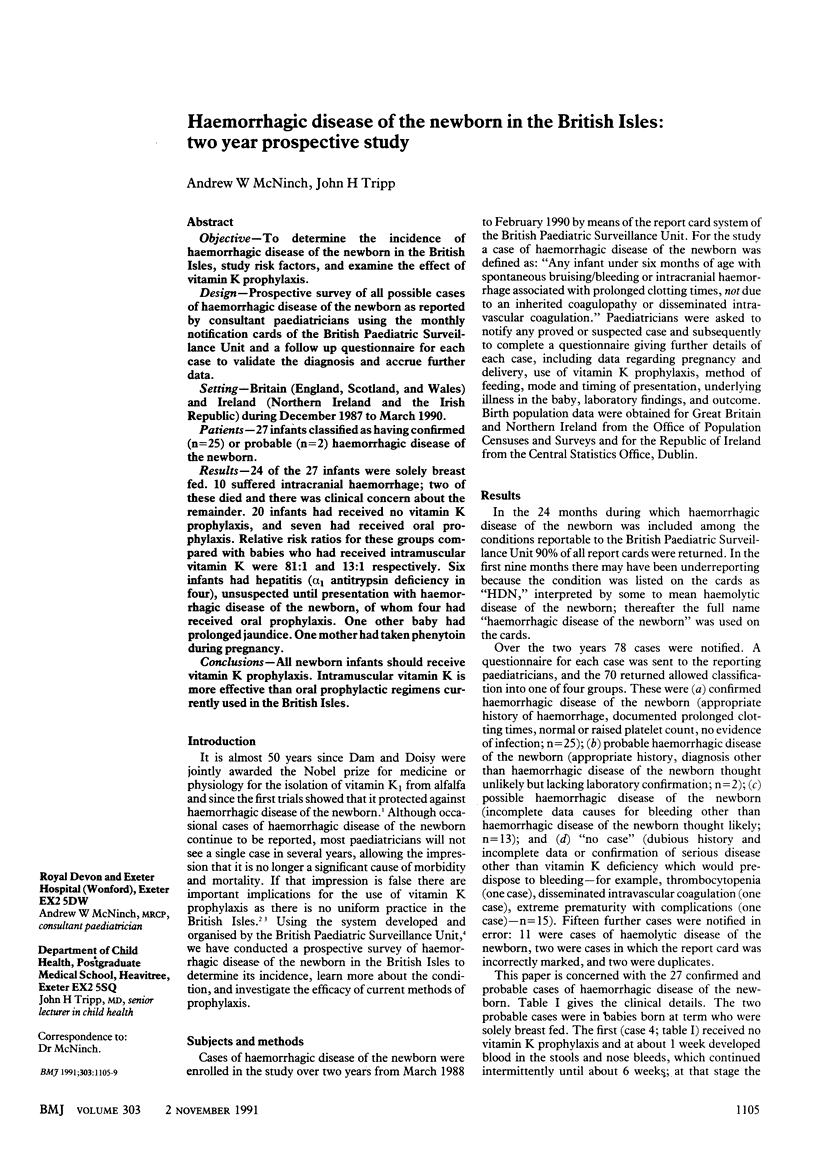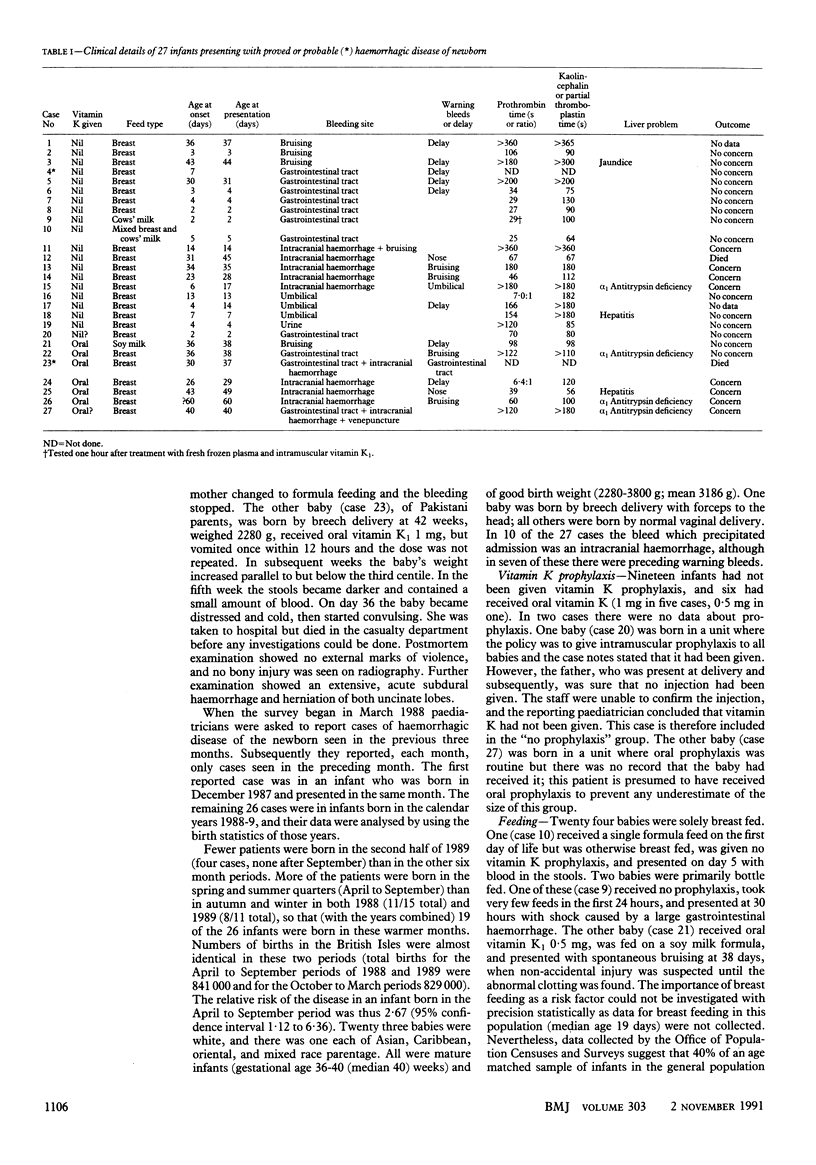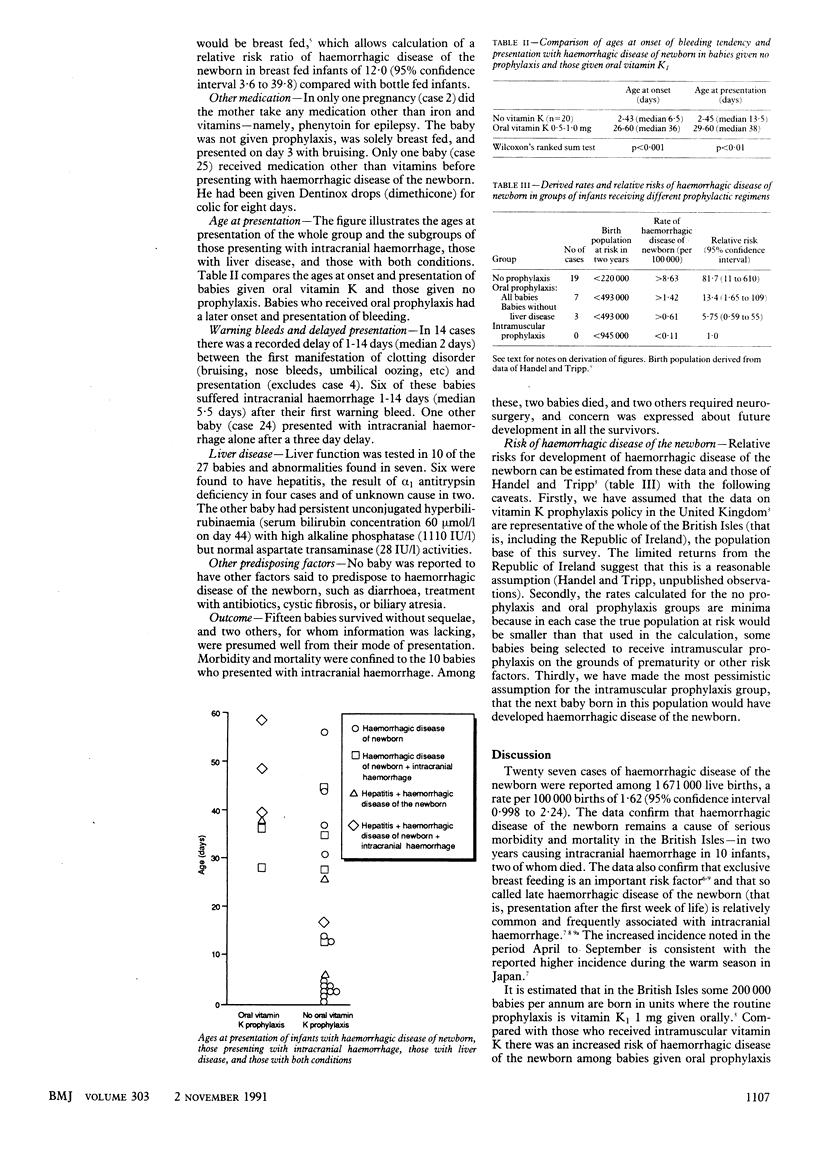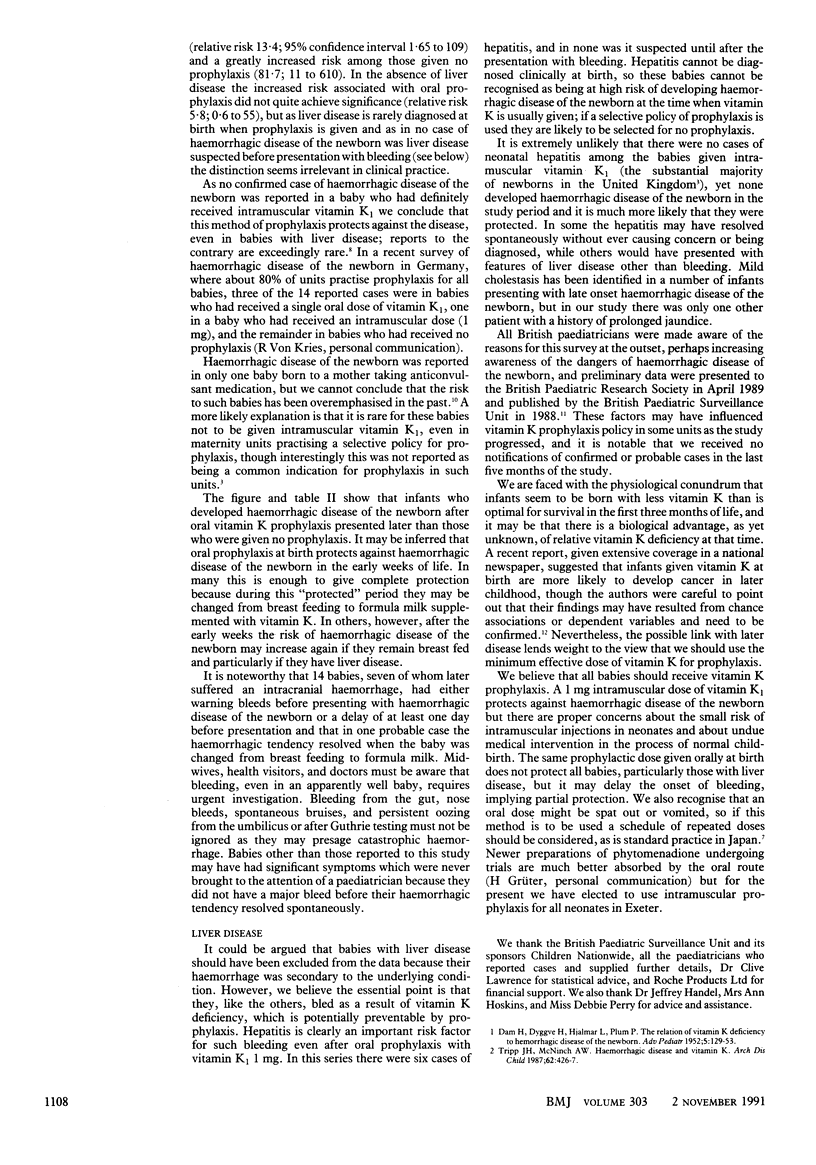Abstract
OBJECTIVE--To determine the incidence of haemorrhagic disease of the newborn in the British Isles, study risk factors, and examine the effect of vitamin K prophylaxis. DESIGN--Prospective survey of all possible cases of haemorrhagic disease of the newborn as reported by consultant paediatricians using the monthly notification cards of the British Paediatric Surveillance Unit and a follow up questionnaire for each case to validate the diagnosis and accrue further data. SETTING--Britain (England, Scotland, and Wales) and Ireland (Northern Ireland and the Irish Republic) during December 1987 to March 1990. PATIENTS--27 infants classified as having confirmed (n = 25) or probable (n = 2) haemorrhagic disease of the newborn. RESULTS--24 of the 27 infants were solely breast fed. 10 suffered intracranial haemorrhage; two of these died and there was clinical concern about the remainder. 20 infants had received no vitamin K prophylaxis, and seven had received oral prophylaxis. Relative risk ratios for these groups compared with babies who had received intramuscular vitamin K were 81:1 and 13:1 respectively. Six infants had hepatitis (alpha 1 antitrypsin deficiency in four), unsuspected until presentation with haemorrhagic disease of the newborn, of whom four had received oral prophylaxis. One other baby had prolonged jaundice. One mother had taken phenytoin during pregnancy. CONCLUSIONS--All newborn infants should receive vitamin K prophylaxis. Intramuscular vitamin K is more effective than oral prophylactic regimens currently used in the British Isles.
Full text
PDF




Selected References
These references are in PubMed. This may not be the complete list of references from this article.
- DAM H., DYGGVE H., LARSEN H., PLUM P. The relation of vitamin K deficiency to hemorrhagic disease of the newborn. Adv Pediatr. 1952 Jan;5:129–153. [PubMed] [Google Scholar]
- Ekelund H. Late haemorrhagic disease in Sweden 1987-89. Acta Paediatr Scand. 1991 Oct;80(10):966–968. doi: 10.1111/j.1651-2227.1991.tb11763.x. [DOI] [PubMed] [Google Scholar]
- Golding J., Paterson M., Kinlen L. J. Factors associated with childhood cancer in a national cohort study. Br J Cancer. 1990 Aug;62(2):304–308. doi: 10.1038/bjc.1990.283. [DOI] [PMC free article] [PubMed] [Google Scholar]
- Hall S. M., Glickman M. The British Paediatric Surveillance Unit. Arch Dis Child. 1988 Mar;63(3):344–346. doi: 10.1136/adc.63.3.344. [DOI] [PMC free article] [PubMed] [Google Scholar]
- Handel J., Tripp J. H. Vitamin K prophylaxis against haemorrhagic disease of the newborn in the United Kingdom. BMJ. 1991 Nov 2;303(6810):1109–1109. doi: 10.1136/bmj.303.6810.1109. [DOI] [PMC free article] [PubMed] [Google Scholar]
- Mountain K. R., Hirsh J., Gallus A. S. Neonatal coagulation defect due to anticonvulsant drug treatment in pregnancy. Lancet. 1970 Feb 7;1(7641):265–268. doi: 10.1016/s0140-6736(70)90636-7. [DOI] [PubMed] [Google Scholar]
- Tönz O., Schubiger G. Neonatale Vitamin-K-Prophylaxe und Vitamin-K-Mangelblutungen in der Schweiz 1986-1988. Schweiz Med Wochenschr. 1988 Nov 26;118(47):1747–1752. [PubMed] [Google Scholar]
- von Kries R., Shearer M. J., Göbel U. Vitamin K in infancy. Eur J Pediatr. 1988 Feb;147(2):106–112. doi: 10.1007/BF00442204. [DOI] [PubMed] [Google Scholar]


